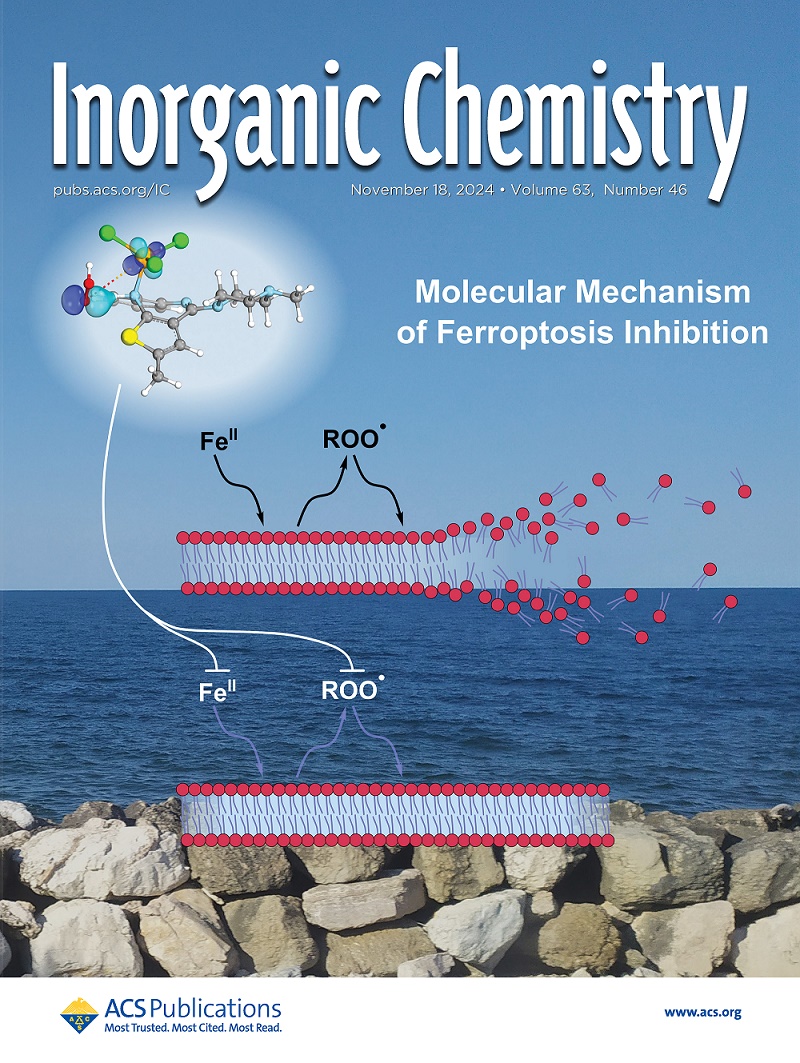Negative Magnetization Phenomena in A-Site Columnar-Ordered Quadruple Perovskites Ce2MnM(Mn2Sb2)O12 with M = Mn and Zn
IF 4.7
2区 化学
Q1 CHEMISTRY, INORGANIC & NUCLEAR
引用次数: 0
Abstract
A phenomenon of magnetization reversal in response to an applied magnetic field is very common and forms the basis of magnetic memories. In contrast, the phenomenon of magnetization reversal in response to a temperature change is rarer. In this work, we demonstrated a pronounced negative magnetization effect (NME) during field-cooled measurements in small magnetic fields in members of the A-site columnar-ordered quadruple perovskites, Ce2MnM(Mn2Sb2)O12 with M = Mn and Zn, which were prepared by a high-pressure, high-temperature method at about 6 GPa and about 1600 K. Their crystal structures at room temperature were investigated with synchrotron X-ray powder diffraction data. Both compounds crystallize in space group P42/n (No. 86) with full rock-salt ordering of Mn and Sb at the B sites. Lattice parameters are a = 7.84545(1) and c = 7.95529(2) Å for M = Mn and a = 7.81270(1) and c = 7.94100(1) Å for M = Zn. The bond-valence sum analysis and the charge balance suggest that cerium is present in the oxidation state of +3. They show one magnetic transition at TC = 52 K with the compensation point near 20 K for M = Mn, and at TC = 34 K with the compensation point near 29 K for M = Zn. A robust, intrinsic NME was also observed on zero-field-cooled curves when measured in small magnetic fields. The NME could originate from its ferrimagnetic structures.

M = Mn和Zn时a位柱状四重钙钛矿Ce2MnM(Mn2Sb2)O12的负磁化现象
响应外加磁场的磁化反转现象是非常常见的,并形成了磁记忆的基础。相反,响应温度变化的磁化反转现象比较少见。在这项工作中,我们证明了在小磁场下对a位柱状有序四重钙钛矿Ce2MnM(Mn2Sb2)O12 (M = Mn和Zn)成员进行场冷却测量时明显的负磁化效应(NME)。Ce2MnM(Mn2Sb2)O12是用高压高温方法在约6 GPa和约1600 K下制备的。用同步x射线粉末衍射数据研究了它们在室温下的晶体结构。这两种化合物在P42/n (No. 86)空间群中结晶,在B位上有完整的岩盐有序的Mn和Sb。对于M = Mn,晶格参数为a = 7.84545(1)和c = 7.95529(2) Å;对于M = Zn,晶格参数为a = 7.81270(1)和c = 7.94100(1) Å。键价和分析和电荷平衡表明铈以+3氧化态存在。在TC = 52 K处,M = Mn的补偿点在20 K附近;在TC = 34 K处,M = Zn的补偿点在29 K附近。当在小磁场中测量时,在零场冷却曲线上也观察到一个鲁棒的、本征的NME。NME可能源于它的铁磁结构。
本文章由计算机程序翻译,如有差异,请以英文原文为准。
求助全文
约1分钟内获得全文
求助全文
来源期刊

Inorganic Chemistry
化学-无机化学与核化学
CiteScore
7.60
自引率
13.00%
发文量
1960
审稿时长
1.9 months
期刊介绍:
Inorganic Chemistry publishes fundamental studies in all phases of inorganic chemistry. Coverage includes experimental and theoretical reports on quantitative studies of structure and thermodynamics, kinetics, mechanisms of inorganic reactions, bioinorganic chemistry, and relevant aspects of organometallic chemistry, solid-state phenomena, and chemical bonding theory. Emphasis is placed on the synthesis, structure, thermodynamics, reactivity, spectroscopy, and bonding properties of significant new and known compounds.
 求助内容:
求助内容: 应助结果提醒方式:
应助结果提醒方式:


